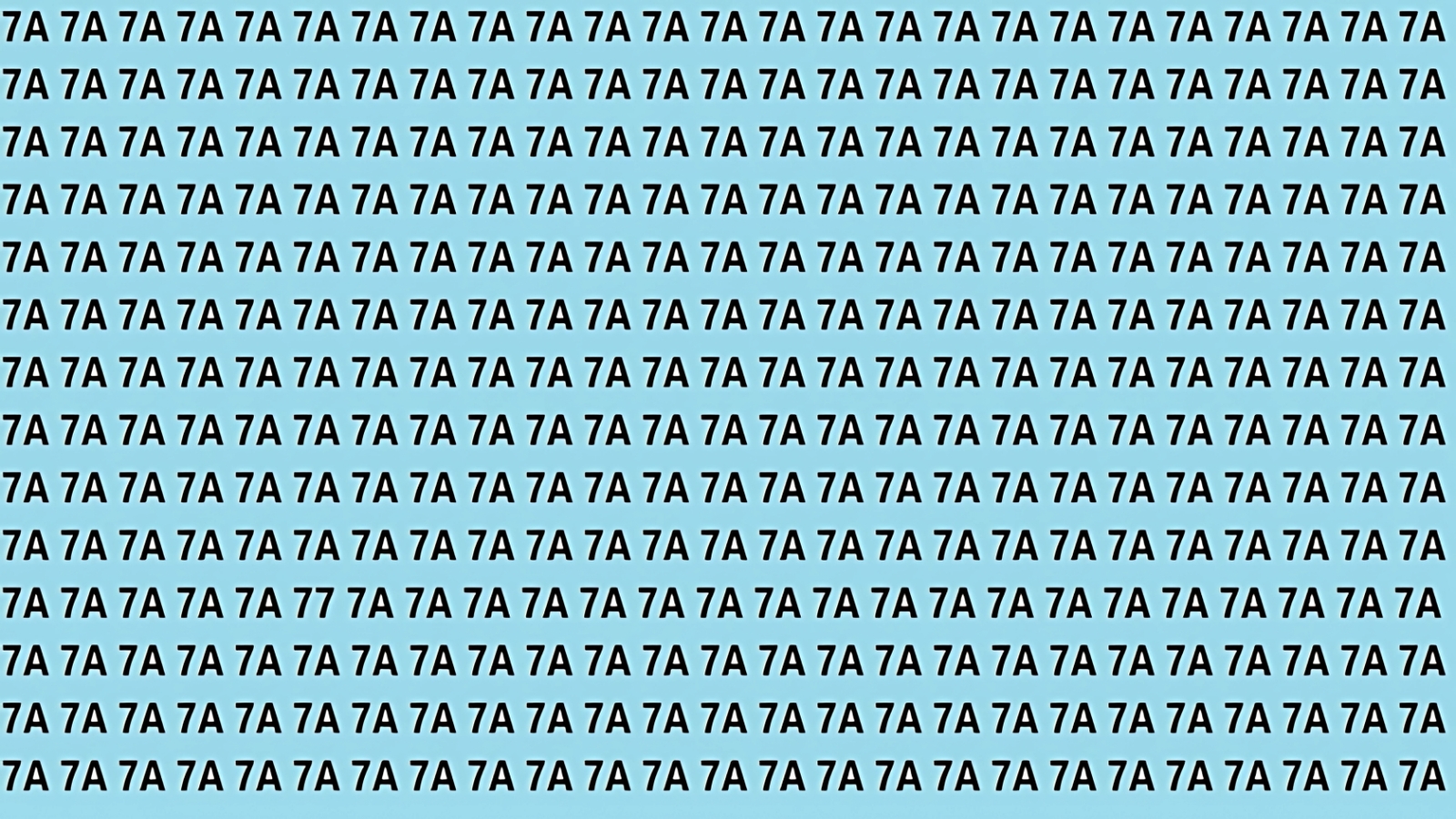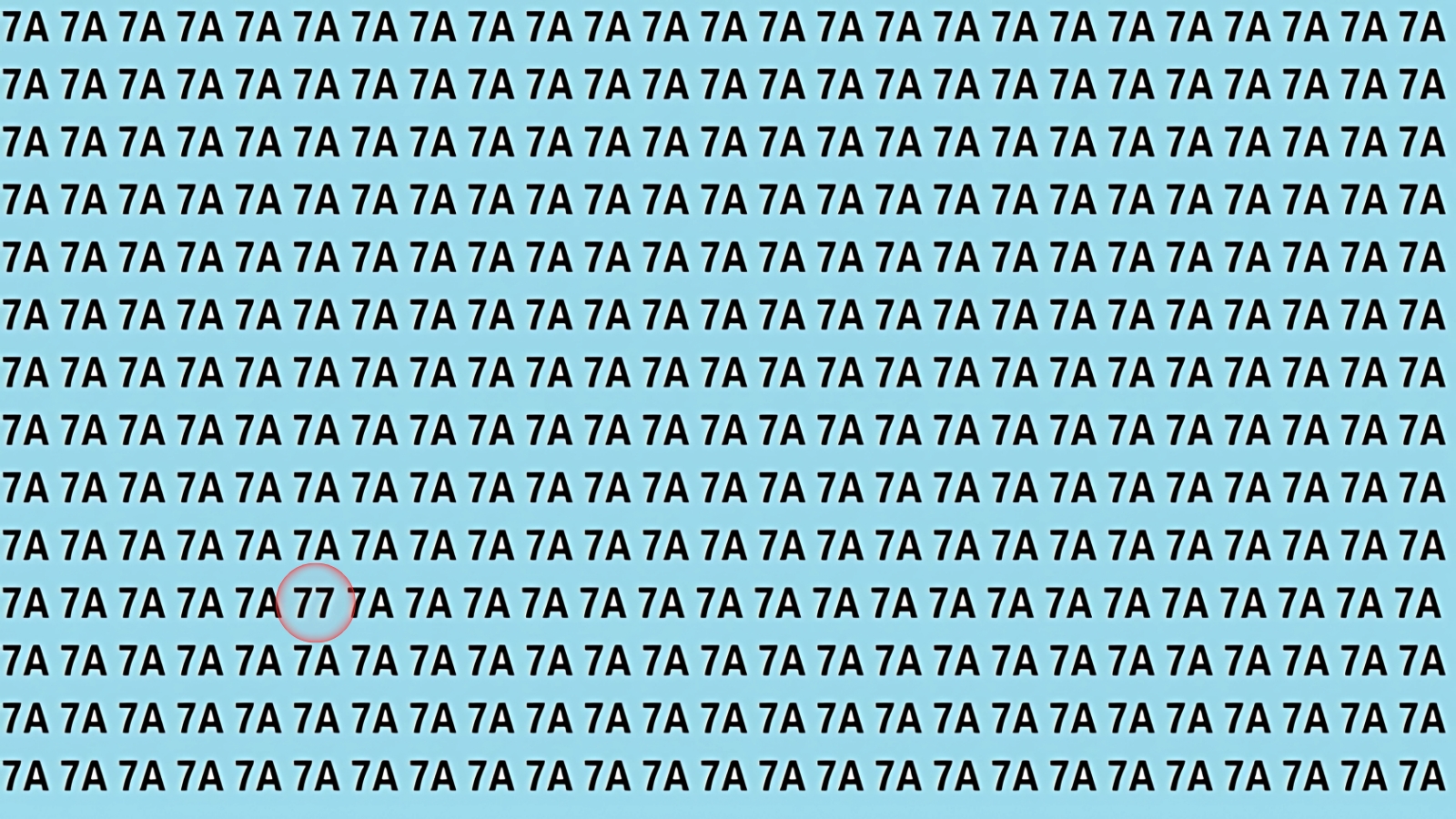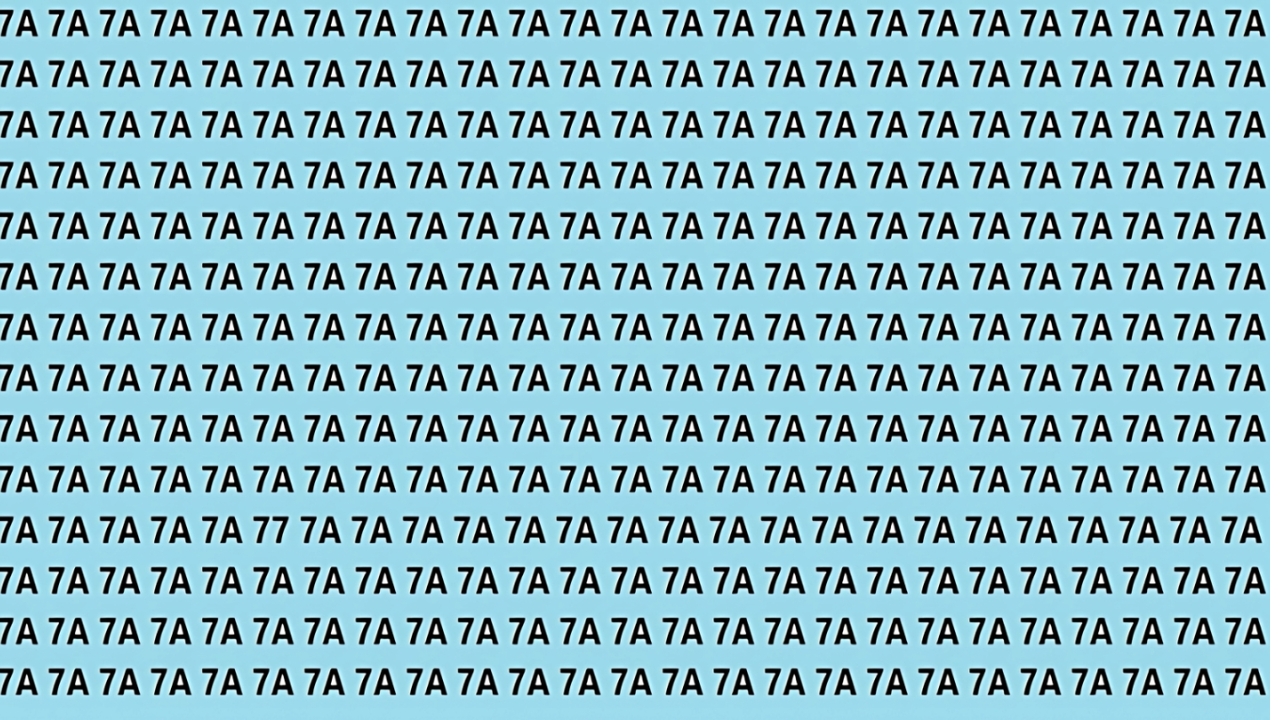Optical Illusion: Can You Spot Hidden 77 A captivating new visual perception challenge is sweeping across social media platforms, testing viewers’ observation skills like never before. This brain-teasing optical illusion requires participants to locate a hidden number 77 cleverly concealed within an array of “7A” patterns, all within a demanding 15-second timeframe.
Understanding Visual Perception and Optical Illusions
Optical illusions demonstrate fascinating insights into how our brains process visual information. These clever puzzles exploit the way our neural pathways handle pattern recognition, often causing us to overlook details hiding in plain sight. Research from cognitive psychology reveals that our brains use predictive processing when interpreting visual scenes, creating expectations that can generate blind spots for unexpected elements.
Optical Illusion: Can You Spot Hidden 77 Among the 7A’s

Why This Challenge Proves So Difficult
The brilliance of this particular optical illusion lies in its strategic use of similar visual components. The number 7 and letter “A” share certain visual characteristics, especially when viewed quickly or peripherally. Our brains naturally group similar-looking elements together, making the 77 combination blend almost invisibly with surrounding “7A” patterns.
The imposed 15-second time constraint adds psychological pressure that actually impairs performance. When rushed, our visual scanning becomes less systematic and more prone to errors.
Cognitive Benefits of Optical Illusion Training
Enhanced Visual Processing Abilities
Regular engagement with optical illusions offers several cognitive benefits extending beyond entertainment value:
Improved Attention to Detail
These puzzles train your brain to notice subtle differences and resist assumptions based on first impressions. This skill translates to improved performance in real-world scenarios, from document proofreading to spotting important details in professional settings.
Accelerated Visual Processing Speed
Consistently practicing time-limited visual challenges enhances your brain’s ability to process visual information quickly and accurately, benefiting activities from driving safety to sports performance.
Stress Management Through Mental Exercise
Engaging with puzzles provides healthy mental stimulation serving as productive breaks from daily stressors. The focused attention required creates meditative states similar to mindfulness practices.
Expert Strategies for Success
Professional visual search research suggests several effective techniques. Try scanning systematically rather than randomly, perhaps moving left to right in rows or following grid patterns. Avoid fixating on single areas too long, as this creates tunnel vision preventing target detection elsewhere.
Some people find success by slightly unfocusing their eyes or viewing images from different angles, sometimes making hidden elements more apparent.
| Challenge Statistics | Data |
|---|---|
| Average Success Rate | 23% |
| Optimal Viewing Time | 8-12 seconds |
| Most Common Mistake | Focusing on center area |
| Expert Success Rate | 78% |
The growing popularity of such consciousness and perception challenges on social media demonstrates our collective fascination with testing cognitive abilities. Whether you spot the hidden 77 within 15 seconds or not, engaging with these puzzles provides valuable mental exercise keeping your brain sharp and engaged.
Optical Illusion Answer

Frequently Asked Questions
Q: What makes this optical illusion particularly challenging?
A: The visual similarity between “7A” and “77” patterns, combined with time pressure, creates cognitive confusion that tricks our pattern recognition system.
Q: Are there proven benefits to solving optical illusions regularly?
A: Yes, research shows improved attention to detail, faster visual processing, and stress-relieving mental exercise benefits.
Q: What’s the most effective strategy for finding hidden objects quickly?
A: Use systematic scanning patterns, avoid random searching, and don’t fixate too long on any single area.
Also Read:-Optical Illusion: Find the 3 Changes in This Couple Picture
